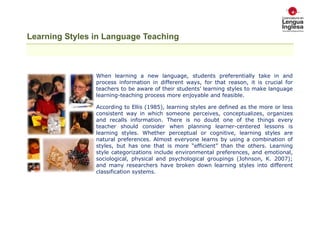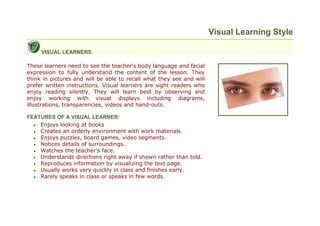The document discusses learning styles in language teaching. It defines learning styles as a student's consistent way of perceiving, processing, and recalling information. Teachers should be aware of students' different learning styles, such as visual, auditory, kinesthetic, and tactile, to make language learning more effective. The document provides descriptions of characteristics for each learning style to help teachers identify students' preferences and incorporate a variety of teaching activities accordingly.





